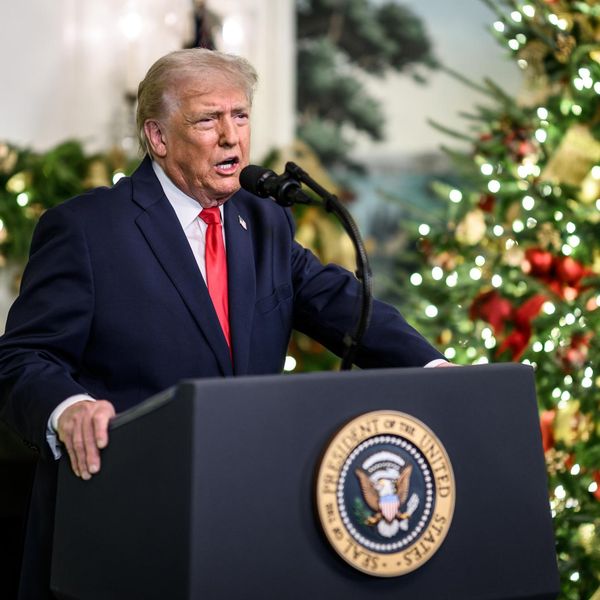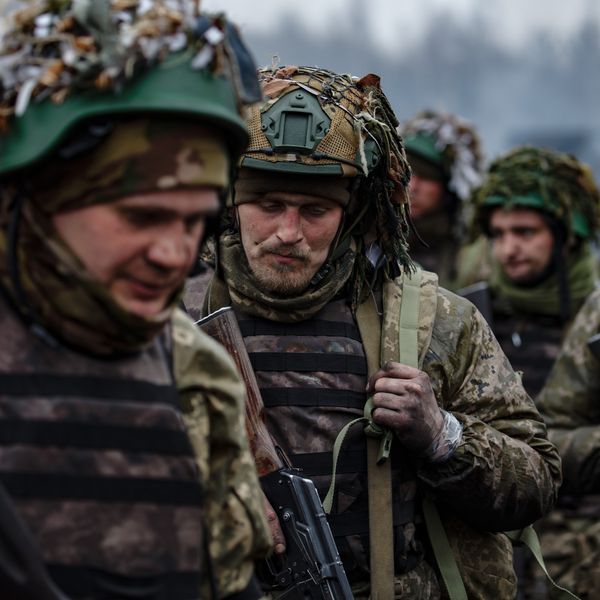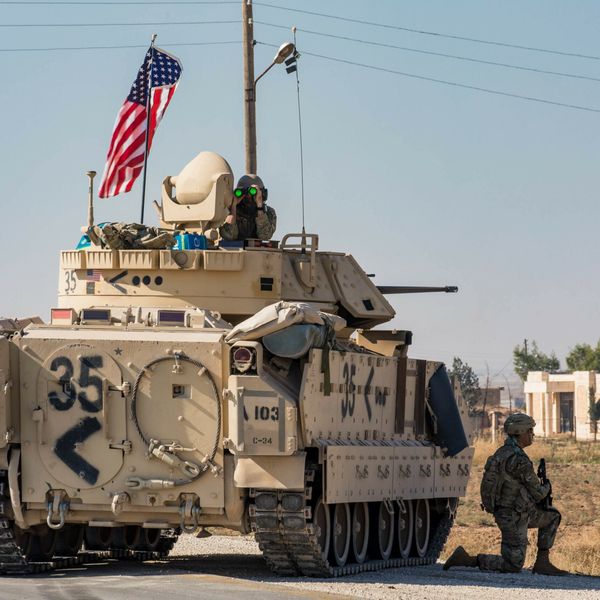One might assume that U.S. nuclear strategy and force structure are determined through serious deliberations among high-ranking officials in decorated uniforms considering adversary capabilities and targeting requirements.
Sometimes that’s not too far from reality. But in many cases, business interests and politics have played a larger role in shaping nuclear force structure than military strategy.
The most recent example is the Air Force’s new Sentinel intercontinental ballistic missile (ICBM) program, which the Pentagon has certified to continue despite its questionable strategic value along with its now $141 billion price tag and several-year schedule delays.
Just two weeks ago Air Force Lt. Gen Andrew Gebara told an audience at the Mitchell Institute that while the force will “restructure to get after the cost growth,” there is no effort to slow down and “work can still continue under the contract that exists today.”
Bringing the pork home
ICBMs in the United States have been intrinsically tied to money and politics since they were first deployed in the 1960s, and rural Midwestern communities witnessed their fortunes changing with the arrival of these weapons of mass destruction.
As Matt Korda, Associate Director of the Nuclear Information Project at the Federation of American Scientists, explains, local residents watched as the U.S. government paid to pave their dirt roads, rebuild their bridges, and upgrade their telephone and power lines to accommodate the needs of the missile bases. To these long-ignored communities, nuclear missiles brought money, jobs, and modernization.
Since the end of the Cold War, politicians from ICBM states have lobbied fiercely to preserve these missile bases. As the primary threat of a bolt-from-the-blue nuclear attack from the Soviet Union faded, so did the need for a force of ICBMs meant to deliver a devastating preemptive blow against Soviet forces. When the Clinton administration thus considered eliminating ICBMs entirely during its Nuclear Posture Review process, a group of senators lobbied to have the issue dropped.
Around the same time, senators from the ICBM host states — Montana, Wyoming, North Dakota, and Utah, home to Hill Air Force Base where ICBM support activities are headquartered — formed the “Senate ICBM Coalition” with the mission of preserving America’s missiles.
The Senate ICBM coalition
The coalition’s role in the Sentinel ICBM program can be traced back to 2006. The Air Force previously claimed that the arsenal of Cold War-era Minuteman III ICBMs could be sustained through 2040. But an amendment by the Senate ICBM Coalition to the FY07 National Defense Authorization Act (NDAA) trimmed the lifespan by ten years.
Thus, coalition members used their influence to accelerate the development of a replacement ICBM, sustaining the force and ensuring benefits for their states for decades longer.
The coalition added other measures to the FY07 NDAA to hinder President Bush’s planned reduction of the ICBM force by 50 missiles.
As President Obama was finalizing negotiations with Russia for New START in 2009, coalition senators worried what the treaty would mean for their ICBMs. Leveraging their votes on the treaty’s ratification, the coalition successfully pressured Obama into limiting the reduction of ICBMs and committing to replace or modernize each leg of the U.S. nuclear triad.
This presented an opportunity for the Air Force to recommend replacing Minutemans with a new Ground Based Strategic Deterrent (GBSD), later named “Sentinel.”
In 2013, the Senate ICBM Coalition blocked the Pentagon from conducting the environmental impact study required before eliminating ICBMs. Also, when a 2013 interagency review concluded that the U.S. could maintain its strategic deterrent with a one-third reduction in deployed forces, the Pentagon began considering a significant reduction in the ICBM force. The coalition, however, successfully pressured the Pentagon to abandon the idea.
Another significant coalition success was a provision to the FY17 NDAA prohibiting the Air Force from deploying fewer than 400 ICBMs, which has been included in the NDAA every year since and which effectively grants lawmakers nuclear force posture authority over military officials.
Lobbying for Sentinel
In recent years, members of the Senate coalition, their allies in the House, and Northrop Grumman — the sole contractor for the Sentinel ICBM — have lobbied fiercely to sustain the Sentinel program.
To get ahead of a potential nuclear force review by a new Trump administration, the Senate coalition published a white paper in 2016 presenting the “strong case” for the Sentinel program, while acknowledging the “strong local interests in the ICBM mission” they represent.
In 2019, coalition allies in the House — and lobbying by Northrop Grumman — helped kill an amendment to the FY20 NDAA that would have required a study on life-extending Minuteman. The ICBM coalition then sent a letter to the secretary of defense conveying concerns over considerations of an alternative to GBSD and imploring him to “ensure the GBSD program is not disrupted or delayed.”
On top of that, Northrop Grumman and its subsidiaries contributed $1.2 million to members of the Senate ICBM Coalition between 2012 and 2020 and over $15 million to members of the Senate and House Armed Services strategic forces subcommittees and the Senate and House Appropriations subcommittees on defense.
One beneficiary was Sen. Jon Tester (D-Mont.), a long-time member of the ICBM Coalition and Senate Appropriations Committee and current chair of the defense subcommittee. During a recent hearing, Tester urged Air Force leadership to keep the Sentinel program on schedule, saying it is “a project that’s near and dear to me.”
Tester has made his personal interest in the Sentinel issue clear, communicating to constituents last month that he’s working to bring the Sentinel pork home: “[Sentinel will] bolster our local economy… I’ll continue pushing the Air Force and government contractors to use as much Montana labor as possible on the project, because if you want a job done right, you hire a Montanan.”
Last year, a group of coalition senators including Steve Daines (R-Mont.), John Barrasso (R-Wyo.), Cynthia Lummis (R-Wyo.), Mike Lee (R-Utah), and Mitt Romney (R-Utah) introduced the “Sentinel Nuclear Deterrence Act of 2023,” which would authorize the Air Force to enter multiyear procurement contracts for Sentinel missiles.
North Dakota Senator John Hoeven (R) boasted in May that he pressured Chairman of the Joint Chiefs of Staff General Charles Brown to commit to “continue modernizing the U.S. nuclear deterrent, especially the intercontinental ballistic missiles.” Hoeven, a member of the Appropriations Committee, took credit in March for securing $4.5 billion in the FY24 Defense Appropriations bill for Sentinel development and procurement.
The fate of Sentinel
The Air Force notified Congress in January that the Sentinel ICBM program would cost 37 percent more than projected and take at least two years longer than estimated — an overrun in breach of Congress’s Nunn-McCurdy Act, putting the program at risk of cancellation.
The Pentagon’s internal review found that the cost would be even higher than previously stated — approximately $141 billion, an 81% increase from 2020 estimates. Despite this exorbitant price tag and “delay of several years,” the Department of Defense this month certified the program to continue.
Besides excessive cost, there is little rationale for ICBMs in a post-Cold War era. Despite arguments by ICBM proponents of the responsiveness of ICBMs, government evaluations reveal that U.S. ballistic missile submarines are “almost equal in speed and reliability” and “virtually undetectable.”
In contrast, ICBMs’ sitting-duck vulnerability invites a devastating strike on U.S. soil by Russia. Beyond Russia, ICBMs are practically useless given that targeting China or North Korea would require overflight of Russia, which could too easily be mistaken by Russia as an incoming attack, risking a preemptive launch.
The diminishing utility of ICBMs has been reflected in moves by multiple administrations and Pentagon officials to reduce and even eliminate their role in recent decades. At every turn though, these moves were fought by senators with personal stake in the preservation of ICBMs.- Oppenheimer and the birth of the nuclear-industrial complex ›
- Prolonging the Ukraine war is flirting with nuclear disaster ›
- Meet the army of lobbyists behind $2 trillion nuclear weapons boost | Responsible Statecraft ›
- Why are we paying $2M each for these missiles? | Responsible Statecraft ›
- The Air Force needs to DOGE the new 'Sentinel' ICBM | Responsible Statecraft ›
- The expanding gravy train for the new land-based Sentinel nuke | Responsible Statecraft ›
- Air sickness symptoms: Old nukes and the F-35 | Responsible Statecraft ›
















